“I really found it difficult to talk to my son in the early months — what was I supposed to say?
But I’m getting my Ph.D. in a field related to the study of people… so I decided to study him.
Once I looked at him through a professional lens, I realized that actually, he was doing a lot!
I could just talk to him about what he was doing, and then infer what I thought it meant. That little trick helped me a lot.”
The term “communicative intent” refers to a child’s use of verbal and/or non-verbal (gestures, eye gaze, vocalizations, etc.) communication methods to communicate a specific message.
In our corresponding podcast episode, “Assuming Intentionality,” we talked about the fact that even young infants are communicative.
We also talked about the fact that parent/caregiver responsiveness is related to the young child’s acquisition and ability to express his/her self through language.
Young babies and toddlers communicate for many different reasons, and in order to read what they are communicating, it’s essential for us as caregivers to read what they are interested in learning.
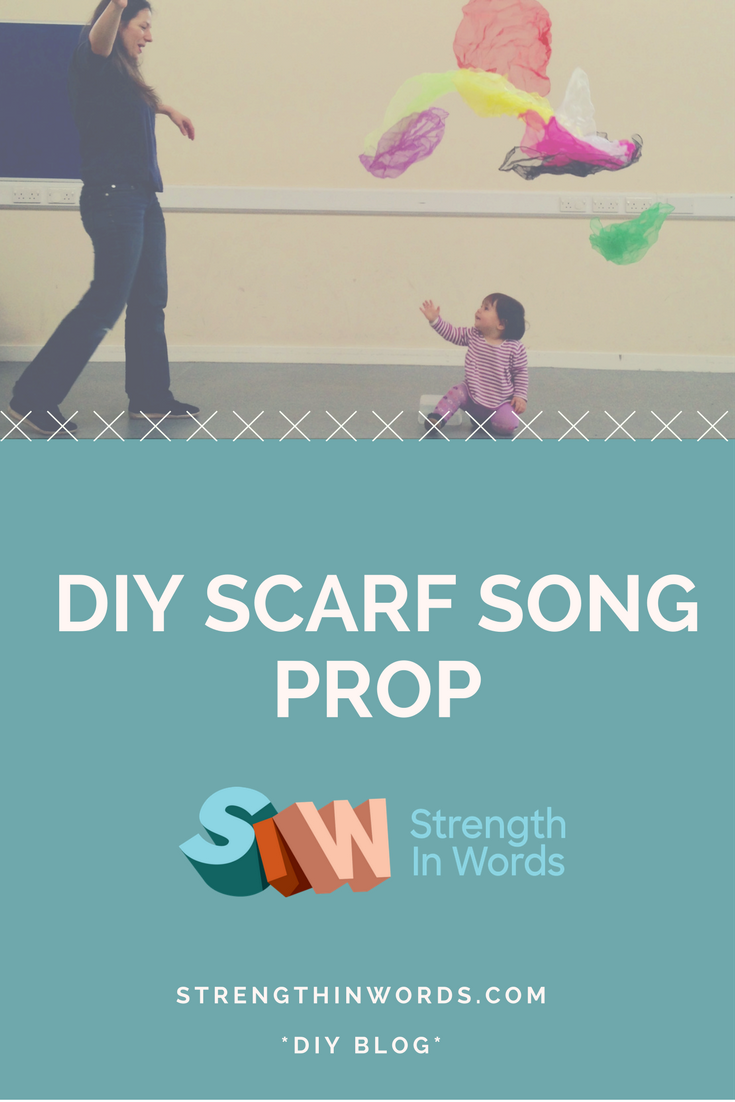
This allows them to teach themselves by exploring objects with their senses, moving where they want to go and how they want to place their bodies, and giving them the time to process what they experience before bombarding them with the things we want to teach them!
This is a rather simple toy/play object, and can be used in a variety of ways to embellish movement activities, play interactive games, or focus on specific language (concepts, vocabulary, etc.), to name a few.
In this podcast episode, we used a language activity embedded in music, modeling turn-taking, and talking about the actions we observed in our environment.


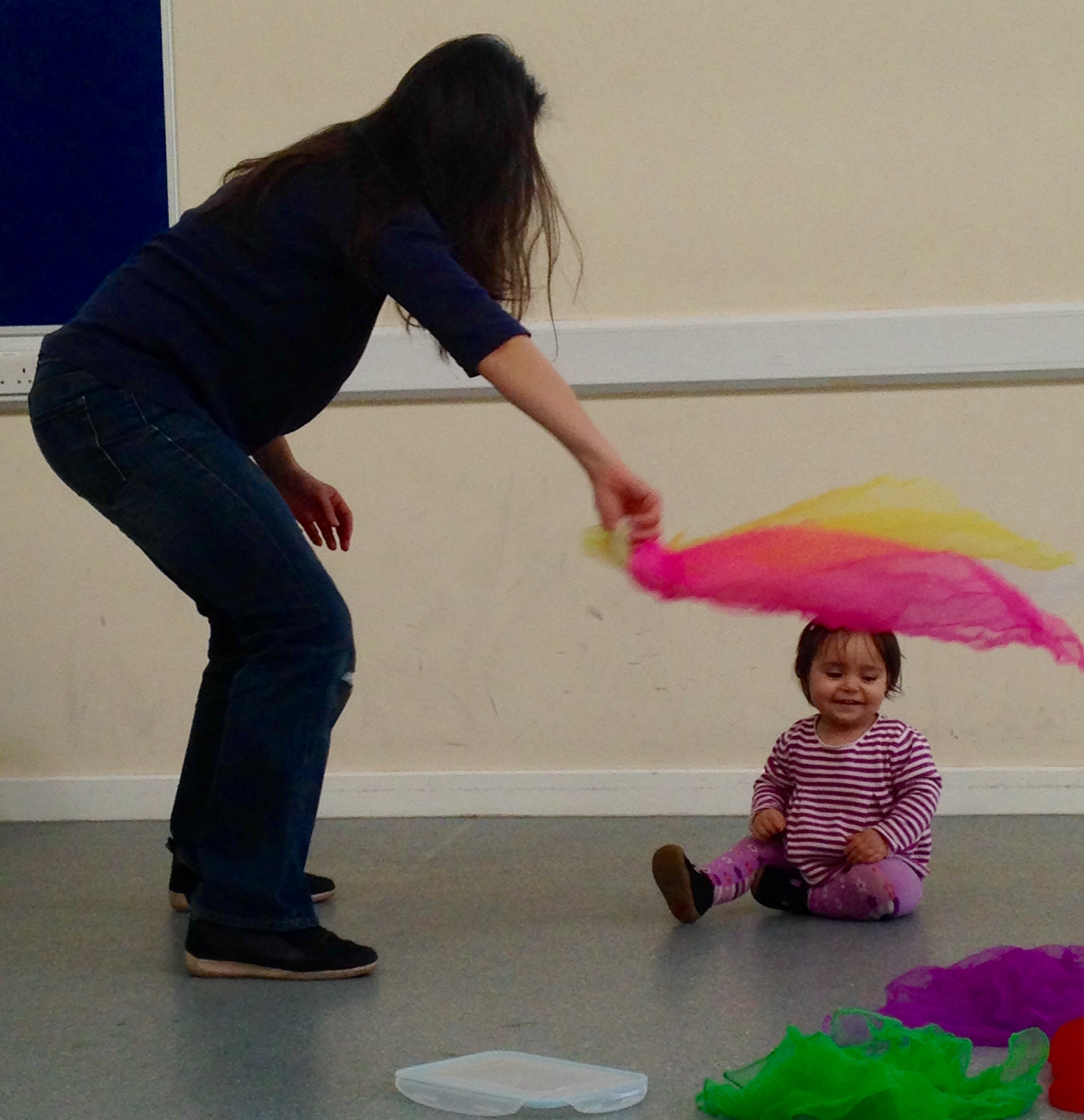
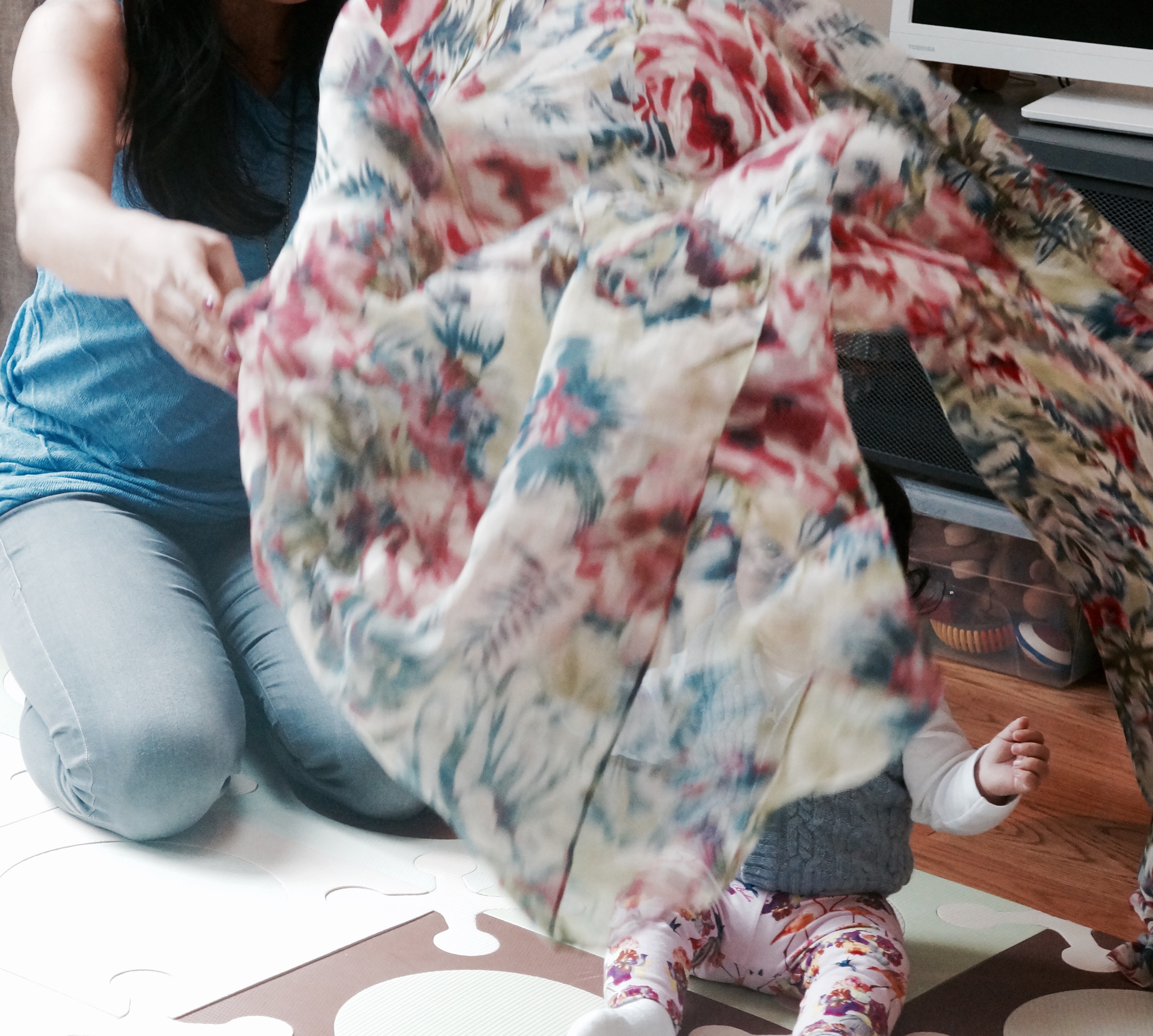
Don't Miss our Corresponding Podcast Episode!
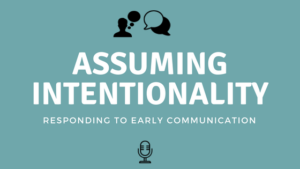
Materials to create your DIY scarf song prop:
- A square-shaped scarf or bandana (flowy, floaty materials such as those pictured and linked to below work best) for each of the participating children and adults.
- Bright and varying colors or patterns can be particularly interesting for small hands to manipulate
Instructions to create your DIY scarf song prop:
- Once each person has a scarf prop, start to hum the tune – take a turn first and do something with the scarf, like “dance,” “swish,” “throw,” “wear a hat,” “turn,” “peek-a-boo”
- When it’s your child’s turn, state what you see him doing – how is he/she engaging with the scarf? Is she looking at it? Holding it? Touching it? Patting it? Crawling or looking away from it?
- Once you’ve sung about what your young child is doing, take another turn or move around the circle.
- For as long as your child is engaged with the scarf, continue to sing – and remember: it’s a prop! If your child moves on and wants to play with something else, you are welcome to continue to sing about what she’s doing with the next object (for as long as that’s enjoyable for both parties!)
Ages:
- Even very young infants engage with items in their immediate environment. You can talk about whatever your baby does with or to the scarf! She may put it in her mouth (please ensure safety!), look at it, reach for it, etc. These are all actions you can label for her, modeling vocabulary!
- Older babies and toddlers will notice you talking about what they are doing, and may imitate what you do with the scarf when your turn comes
- This is a great activity for small groups, or for a family activity with siblings of two ages – with the added benefit that you can teach your older child ways to teach the baby through language and movement
This post contains affiliate links. All activities described by Learn With Less assume close and continuous supervision of the child by an adult.

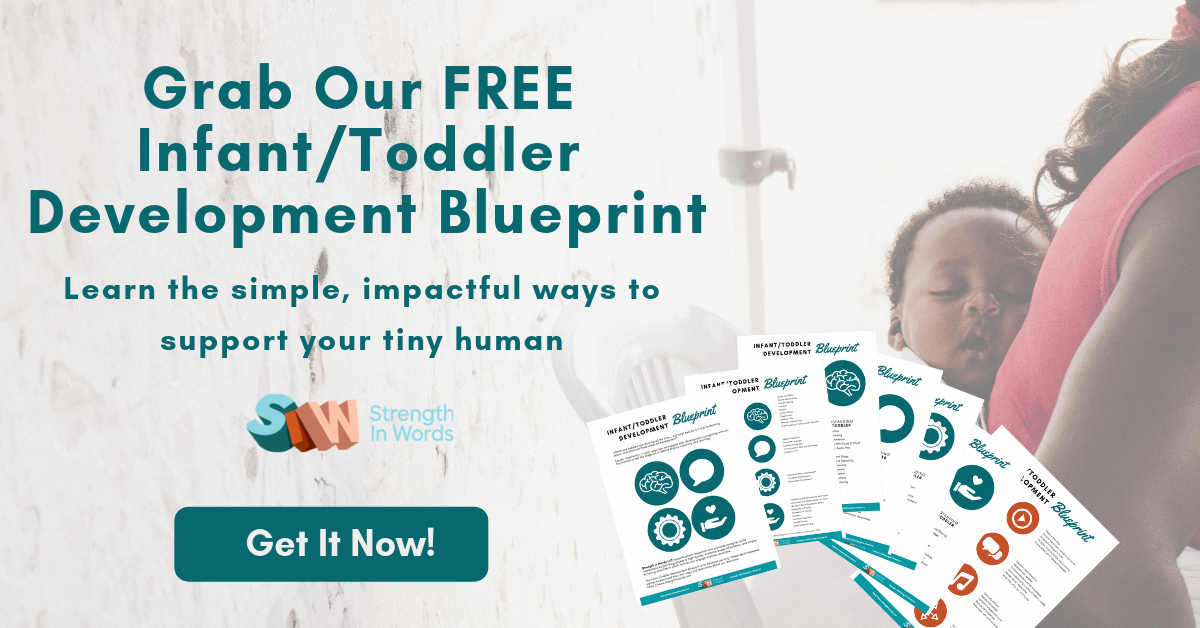
Lovely idea.
Thanks for sharing with #LetKidsBeKids
Thanks for reading!
I always wondered where those lovely colour silks were from, I need to find a UK supplier as I’ve wanted some for ages I think they’re fantastic and I love your ideas for them. Thanks for linking up to #Toddlerapprovedtuesday
Hi Clare’s Little Tots! They are endless amounts of fun! I actually bought mine when we were living in London, from amazon, but a cursory search also brought up these: http://www.earlyyearsresources.co.uk/physical-development-c374/creative-dance-c387/dance-scarves-p12010
Enjoy!!